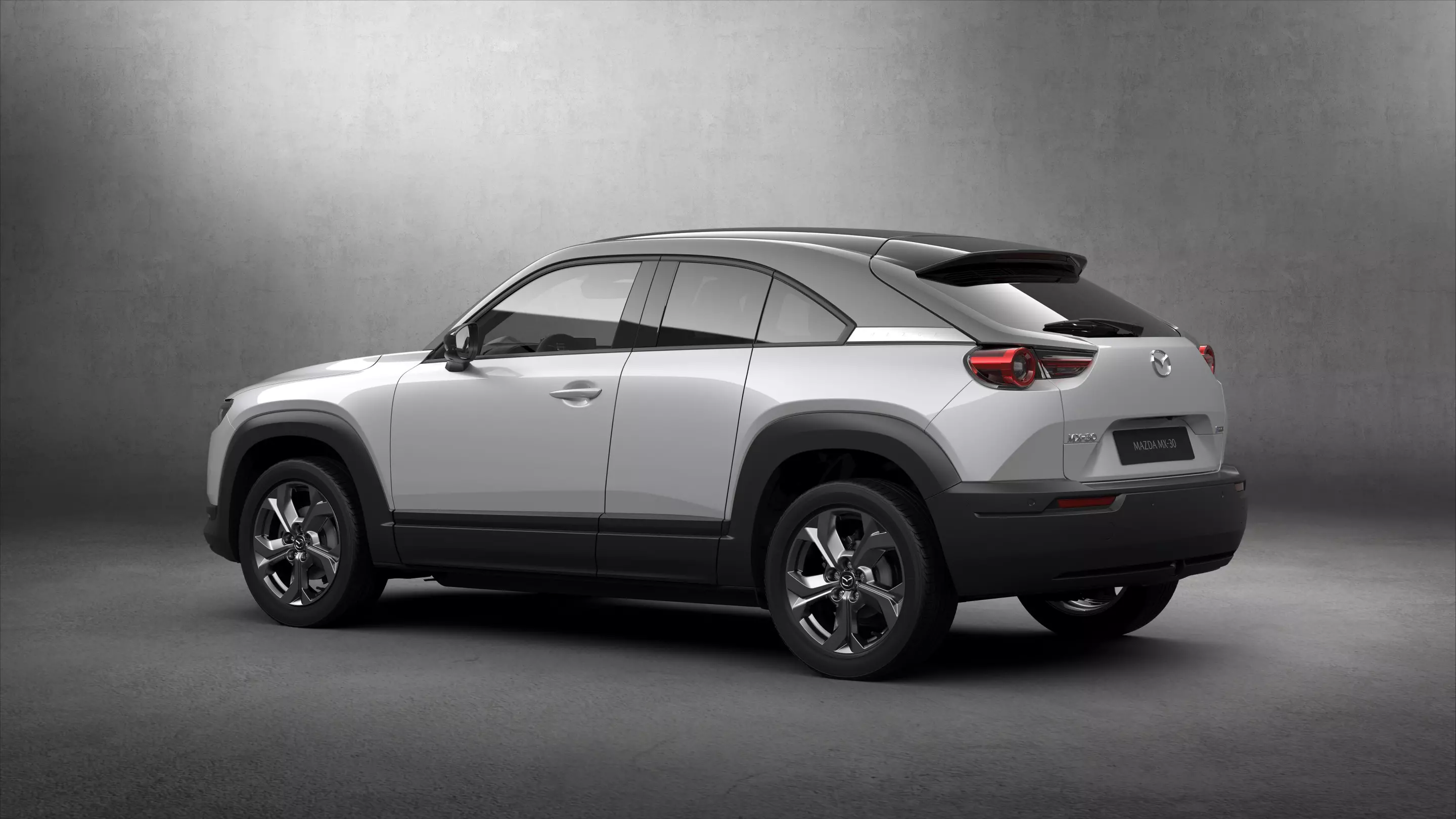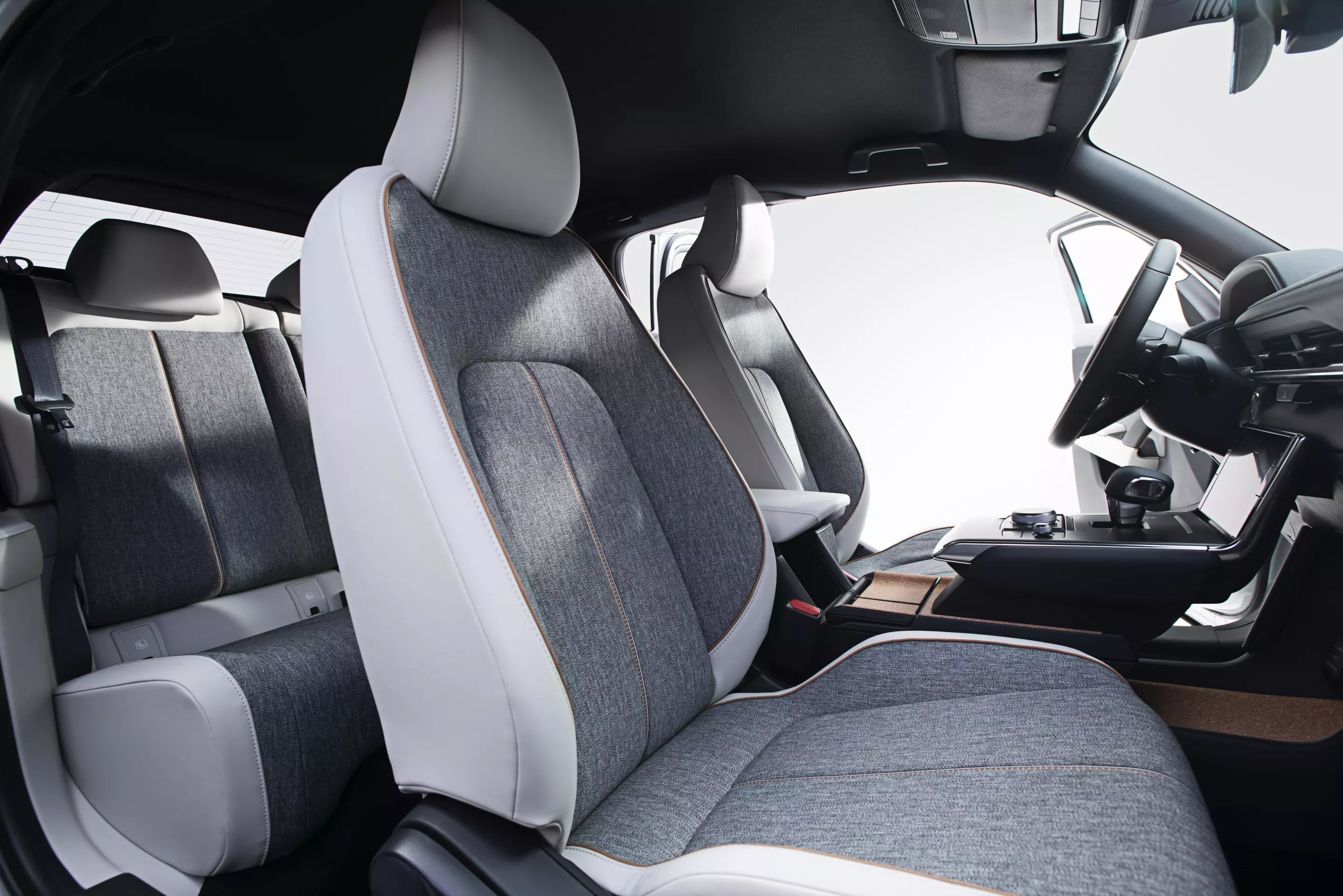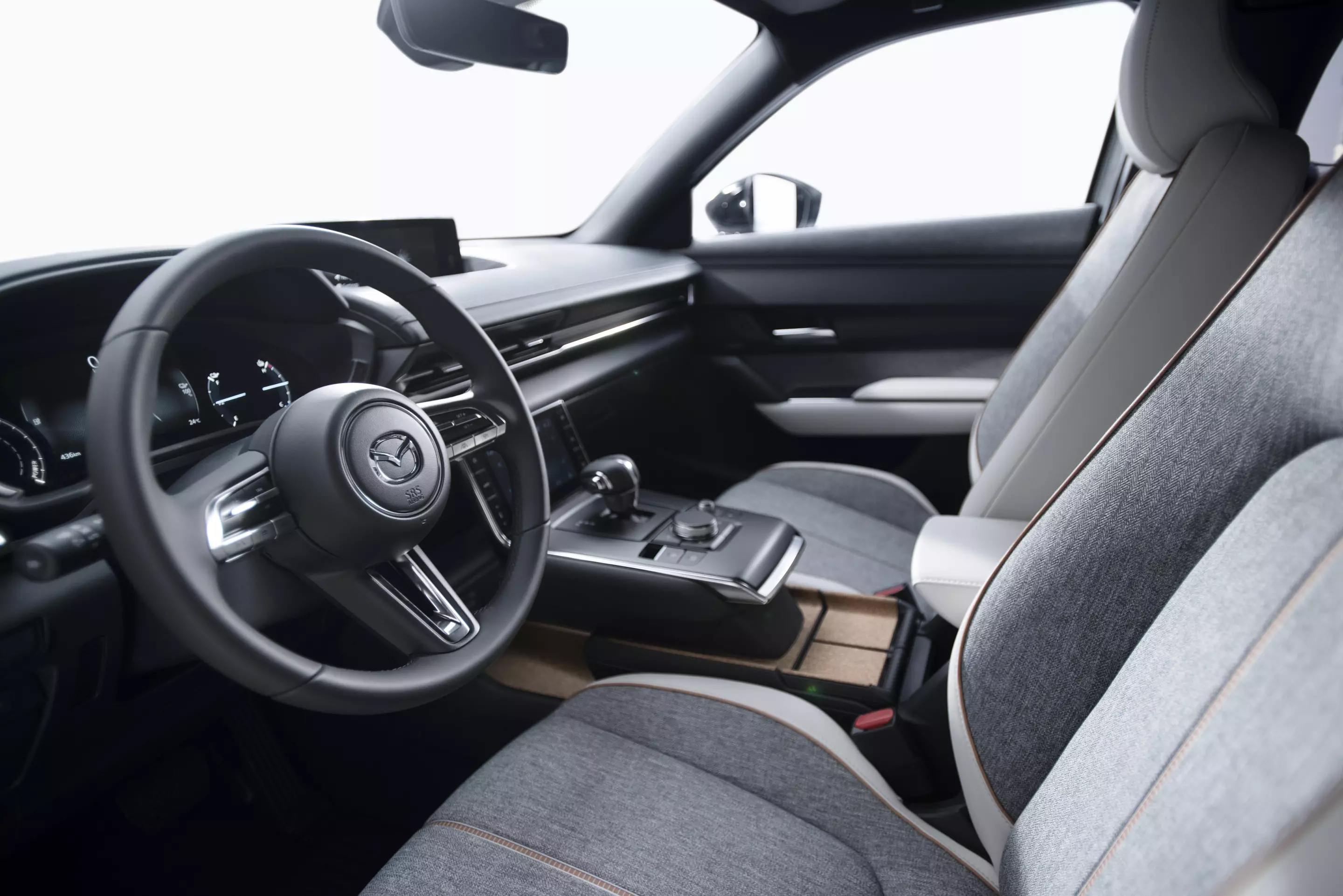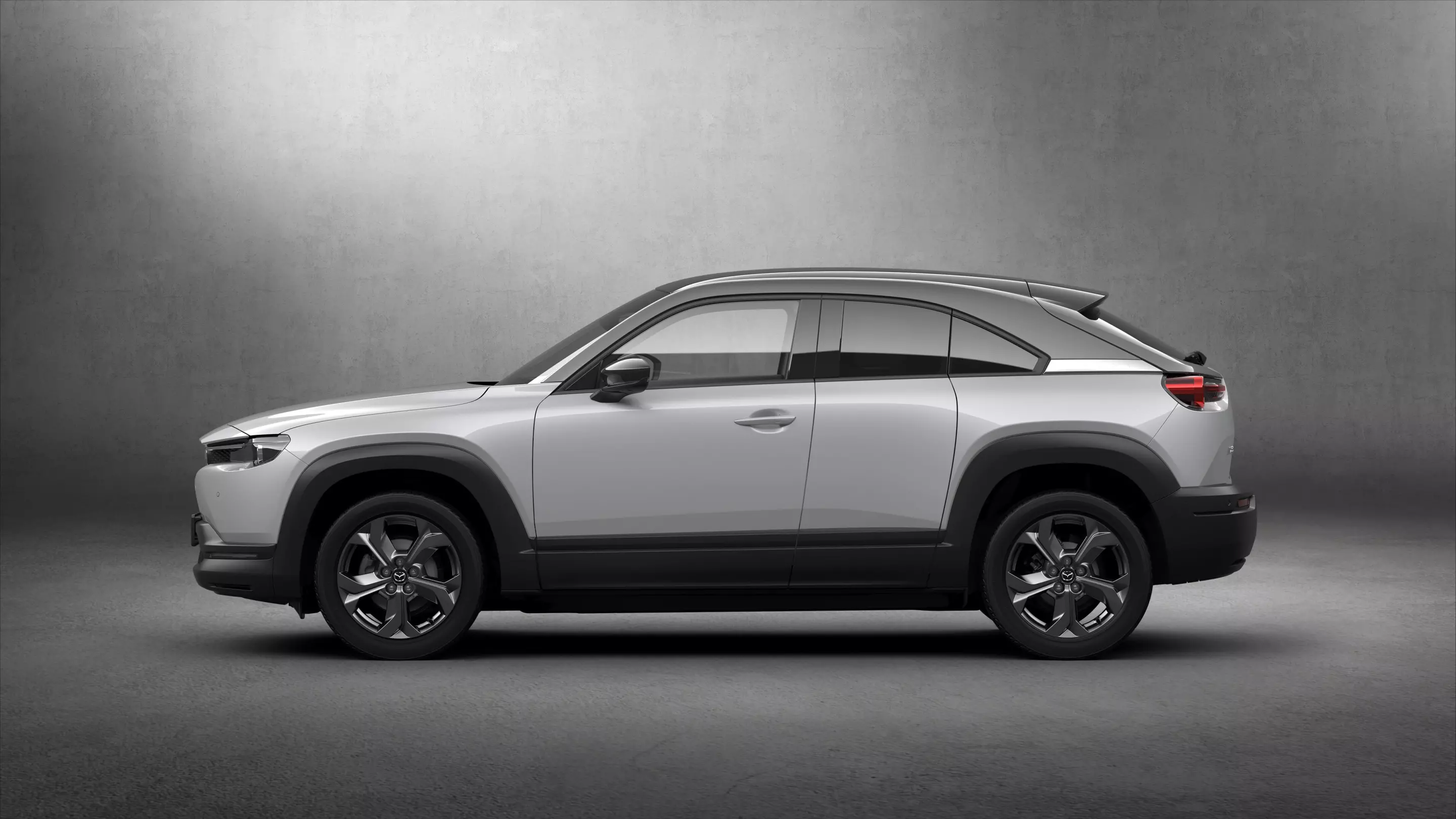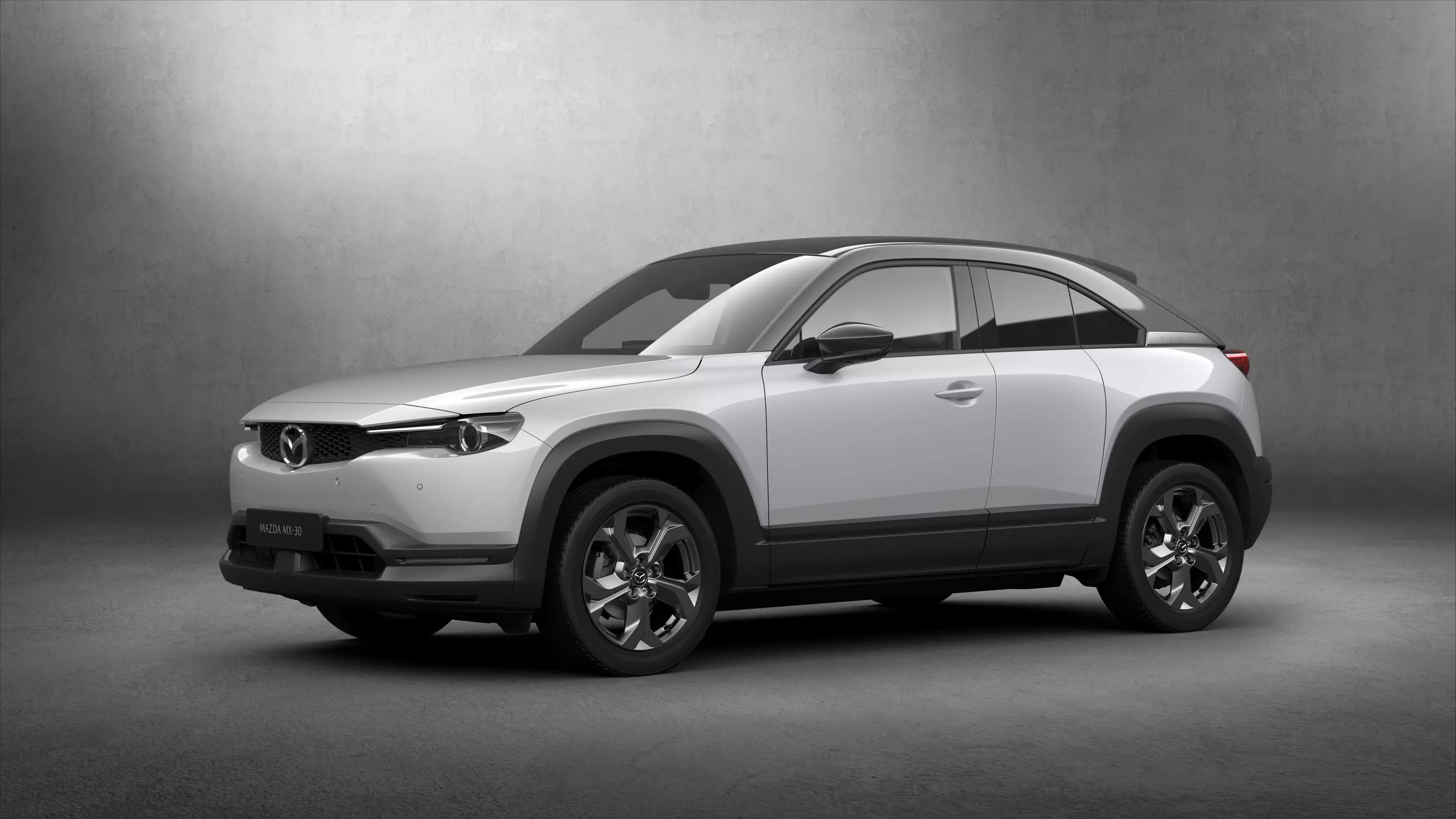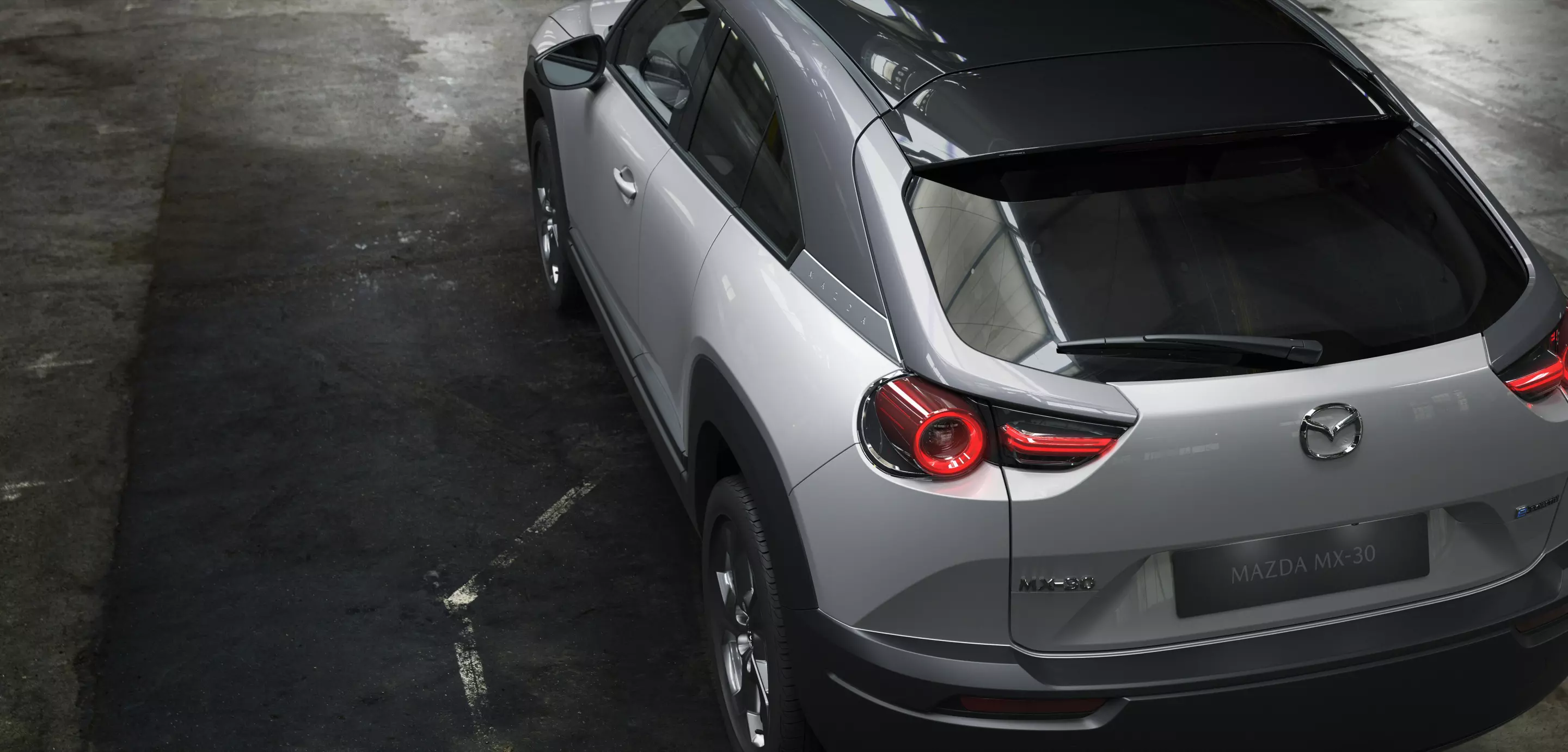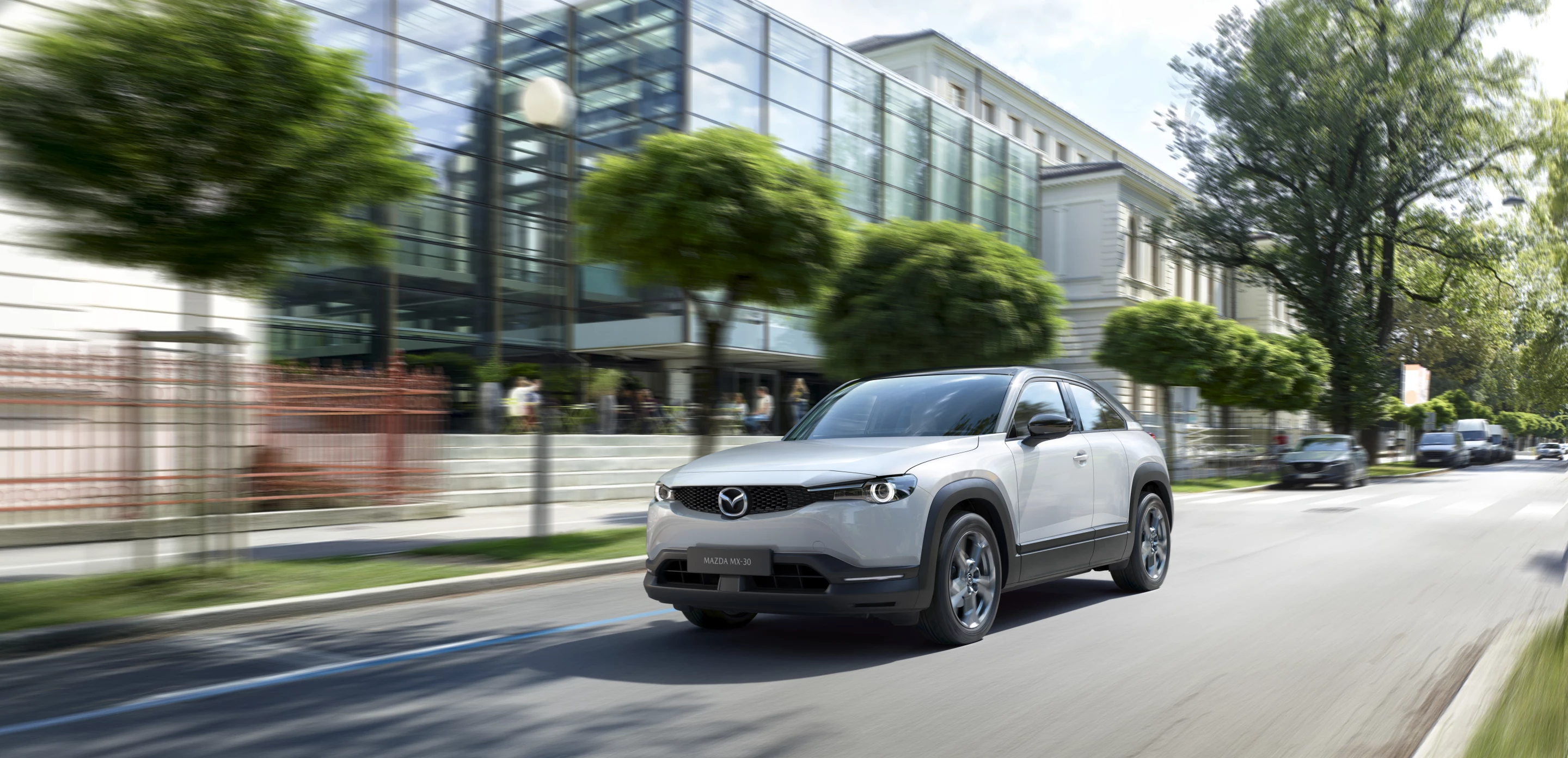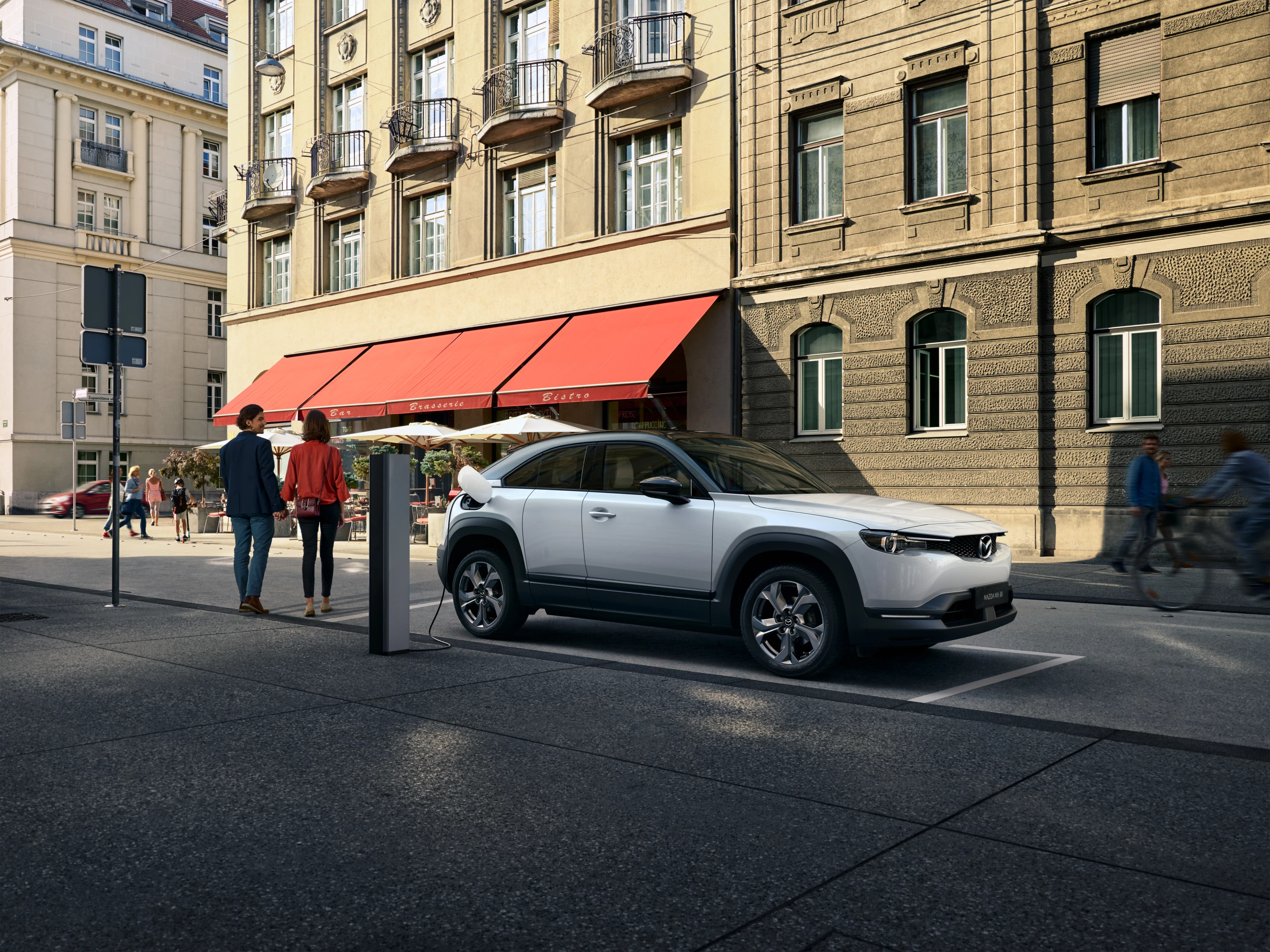Mazda isn’t kidding around anymore when it comes to electric vehicles, unveiling a new production model EV in Tokyo. The new Mazda MX-30 is a two-and-a-half-door crossover-style compact that will be produced for several world markets.
The MX-30, shown in Tokyo in its European specifications, has suicide-style rear half-doors (Mazda calls them “Freestyle doors”) that open to reveal a pillar-less cabin for easier access. The Freestyle doors also allow the MX-30 to have a couch-like rear seat. That’s not the new Mazda’s only unusual feature.
Styled very similar to most Mazda hatchbacks and crossovers, the MX-30 EV features the simplicity of Mazda’s signature Kodo design language. A few flairs, such as the more aggressive rear hatch slope, the turned lines above the rear pillar, and a simplified front grille are unique to the MX-30, though. The grille makes it clear that airflow is not a priority with this electric car, accenting a flat bumper face instead. This mirrors the general look of the rear fascia as well.
The plug port is located in the traditional rear quarter, further keeping the general “EV is normal” theme of the MX-30 – Mazda says that it put some effort into consumer expectations for a daily-drive EV. Interior ergonomics were also of heavy consideration for the new vehicle, centered on Mazda’s Human-Machine Interface focus. The front seating and driver’s controls are clearly Mazda, made to stimulate movement.

Ahead of the shifter on the console is a 7-inch touchscreen that’s meant to be more easily accessible to the driver’s hand, which will naturally be placed at or near the shift knob. The graphics displayed when the vehicle door is opened change according to the weather and time of day, so as to set the mood for the drive. The display is otherwise used mostly for climate controls.
Mazda designed the MX-30 around it electric drivetrain, modifying the all-inclusive Skyactiv chassis-body-frame design for EV use. The result is e-Skyactiv, which utilizes the multi-directional ring structures of the car’s body and G-vectoring control systems to manage the lower weight distribution of an EV with batteries in the floor. Most of the MX-30’s batteries are located between the center point of the axles and the rear axle, countering the weight of the motor and control systems located on the front axle. The charge controller is located on top of the rear axle under the luggage space.
The MX-30 has a full suite of active safety features on board, including lane-keeping assist, forward collision warning and emergency braking. The car also has adaptive cruise control and a one-pedal driving system similar to those found in other EVs like the Chevrolet Bolt and the Nissan Leaf.
Mazda has not given specifications on range expectation, but the MX-30 sports a 35.5-kWh liquid-cooled battery pack that can charge on fast chargers at up to 6.6kW AC. Mazda says more information in that regard will be coming closer to the vehicle’s launch, which is slated for early 2020.
Source: Mazda


